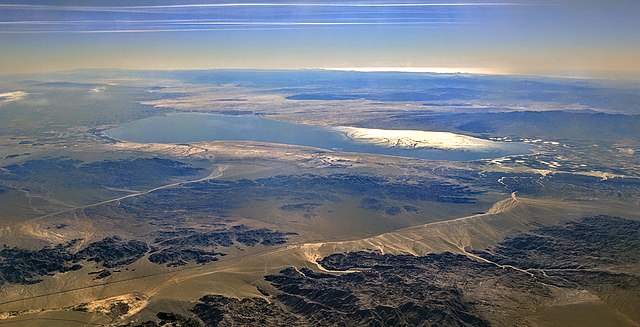
California’s infamous Salton Sea has been a known hotbed of lithium for years, but no one had a sense of how much “white gold” was found there. Now a new study quantifies that, and it’s impressive: The huge underground reserve of scorching hot brine located underneath the lakebed contains enough lithium to build batteries for 375 million electric vehicle batteries, making it one of the largest lithium brine deposits in the world.
A new study from the US Department of Energy released this week is the first to quantify how much valuable metal is down there, and it’s a lot more than previously thought. Researchers from the Lawrence Berkey National Laboratory say the reserve can support the production of 3,400 kilotons of lithium, enough to build batteries for 375 million electric vehicle batteries, according to the DOE. The US currently has roughly 2.4 million registered EVs (and that data hasn’t yet been updated for this year). Some say that the EV market is set explode by 2030, with predictions that we could face a lithium shortage as soon as 2025.
The Salton Sea is best known for being the state’s worst ecological disaster, as droughts, heat waves, and agriculture have caused the water to recede, forming a dry barren-looking lake bed alongside mass die-offs of fish from the high salinity of the water. But the Salton Sea has had a green energy reinvention of sorts, with companies of all sizes trying to assess how to extract lithium from the geothermal brine deep underneath the lake’s southern end, and for a decade it’s been a source of geothermal electricity production. Governor Gavin Newsom has called the lake the “Saudi Arabia of lithium.”
Of the new findings, the DOE says that all of that lithium found there can “enable the United States to meet or exceed global lithium demand for decades,” according to a press release. “This is pretty significant, it makes this among the largest lithium brine deposits in the world,” Michael McKibben, a geochemistry professor and one of the study authors. “This could make the US completely self-sufficient in lithium so we’re no longer importing it via China.”
Of course, finding a way to harness and extract the lithium from a geothermal brine at a commercial scale is a daunting task, but a few companies are already working on it and have secured large investments to develop technology. The California Energy Commission also gave a $6 million grant to Berkshire Hathaway Energy, as well as a $1.46 million grant to Controlled Thermal Resources a few years back to develop extraction techniques. Back in 2021, GM partnered with Controlled Thermal Resources (CTR) to secure lithium from the Salton Sea, with Stellantis also making agreements with CTR. EnergySource Minerals, which opened its first geothermal plant there in 2012, and Ford have also signed a contract.
But rather than open-pit drilling and creating huge evaporation pools, all which can take months and years and leave destruction in their wake, the plan is to do it in a more environmentally friendly way. Companies are working toward a direct lithium extraction technology that can extract the brine and separate lithium from other metals.
Electrek’s Take
This is certainly a compelling development in the very long saga of the Salton Sea. And it’s one of those buzzy topics that I’m sure we’ll hear about a lot over the next year. But still, it’s a long bet to seeing this project bear any fruit, if it even should. The Los Angeles Times makes an interesting case, saying that no company has yet been able to exact lithium from the underground brine, and it’s a costly, complicated endeavor, with the salt alone quickly corroding equipment.
Not to mention the potential political hurdles in making this happen, as well as permitting and costs of getting work crews out to a region with very little infrastructure in place, and surmounting any opposition from mining – although the Salton Sea is likely to be more in the clear in terms of that.
Still, for clean technology to move forward, these types of critical minerals are vital, and currently, China holds all the cards. So, the idea is certainly appealing: environmentally friendly extraction (if that will truly be the case), a free-flowing domestic lithium source, and loads of skilled jobs in the US. We’re all in on the dream.
Image: Creative Commons/Dicklyon
FTC: We use income earning auto affiliate links. More.

Comments